Main photo credit: Travis Brady
Amelanchier invites everyone into the garden, sets an elegant table, and makes sure no one leaves hungry. It is the consummate host plant.
Amelanchier (pronounced “amuh-lank-kee-yer”) is a small tree or multi-trunked shrub that will feed bees, butterflies, birds, woodland animals, and humans, all while looking beautiful. You may know it by one of its many common names: serviceberry, shadbush, shadblow, juneberry, wild plum, sugarplum, or saskatoon. While there is debate about the origin of some of these names, everyone agrees that it was called “shadbush” by settlers in New England because its early bloom time coincided with the spawning season of shad fish in northeastern rivers.
Amelanchier blooms in April, covering itself with delicate white flowers, and providing essential nectar and pollen for the first emerging bees. The elegant white blossoms are a welcome sight contrasting beautifully with evergreens. While the flowers remain, bees, butterflies, hummingbirds, and moths all come to visit.
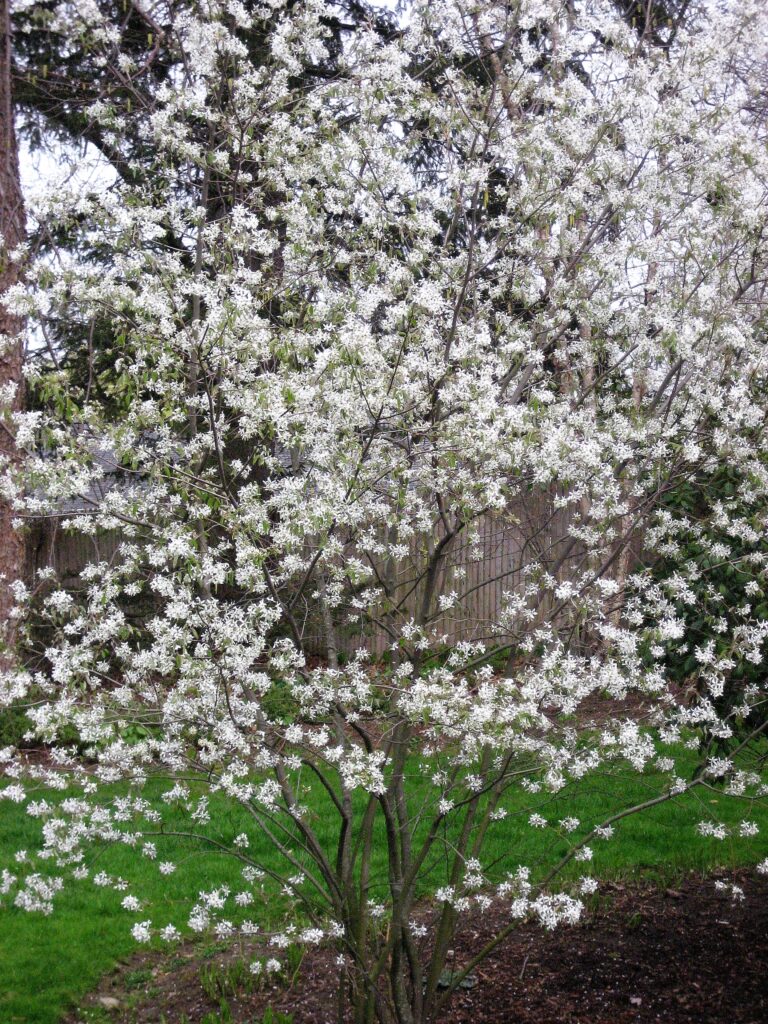
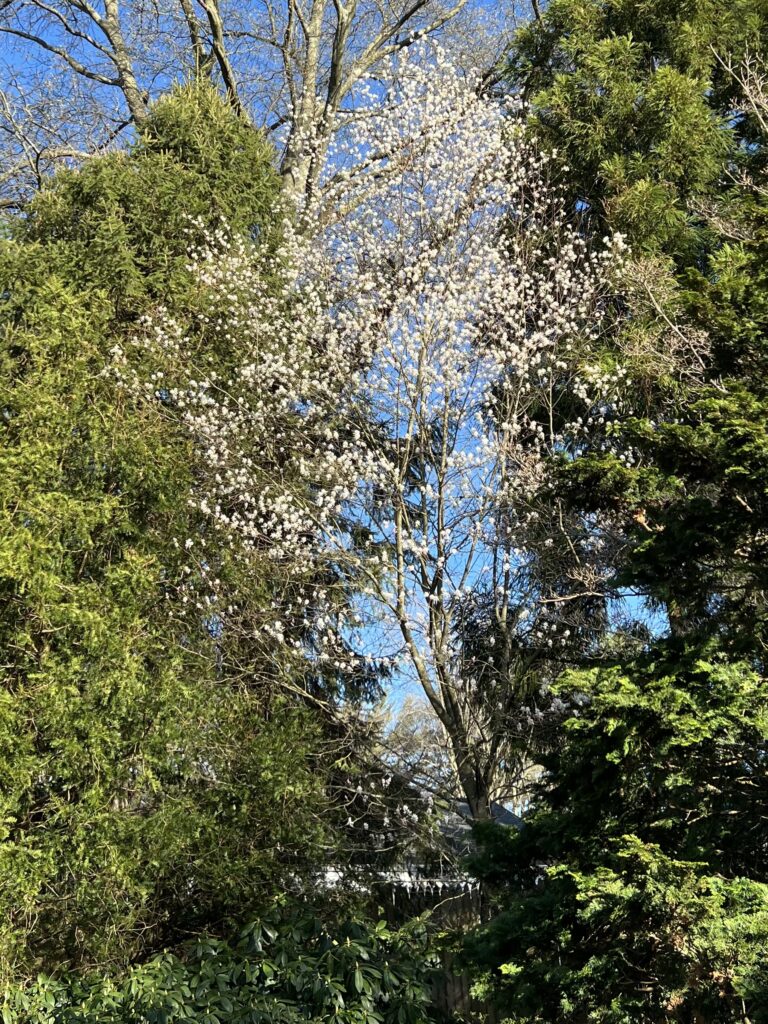
Leaves appear as the flowers fade, but Amelanchier never creates heavy shade. The leaves are narrow and open, so there is plenty of light for underplanting. A true host plant, Amelanchier feeds an estimated 124 species of caterpillar, including the Viceroy, the Striped Hairstreak, and the Red Spotted Purple. That hospitality makes Amelanchier a very appropriate addition to our Pollinator Garden.
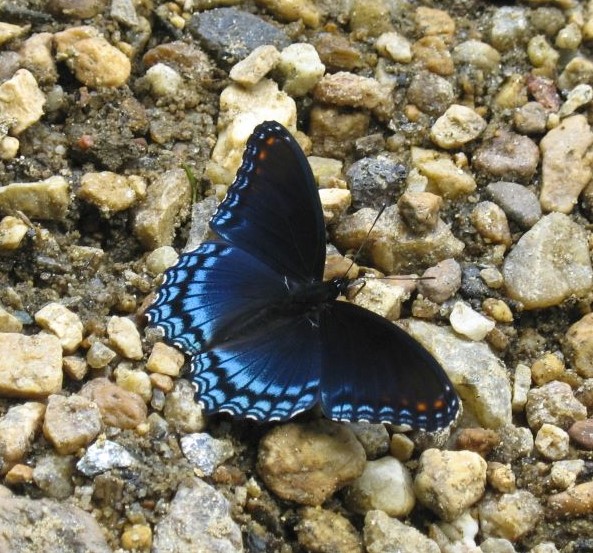
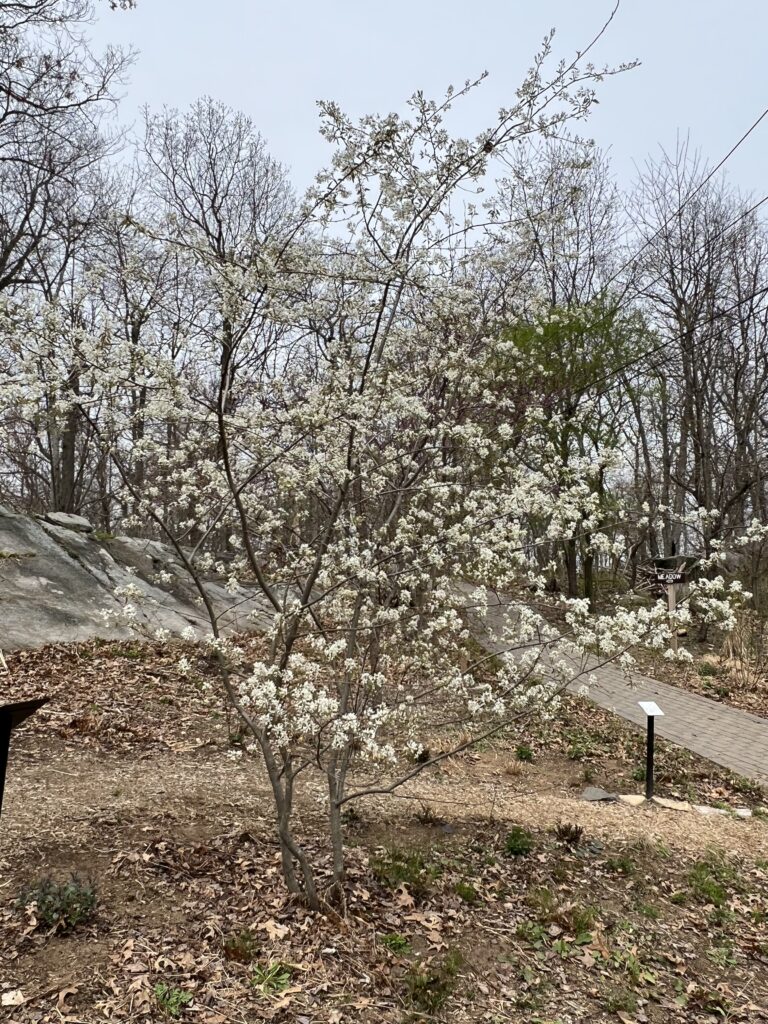
Photo: Travis Brady
Our gracious host really sets a fine table in June when the berries appear. That’s when the common names “Juneberry” and “Sugarplum” make sense. Amelanchier berries are not only edible, they are delicious! About the size of blueberries, but delicately sweet like raspberries, Amelanchier berries can be eaten right off the branch or turned into a very fine pie – but only if you can get enough of them before the birds do. It seems that robins, blue jays, cardinals, and mockingbirds all are willing to eat the berries a day or two before we think they are ripe. And we have seen chipmunks and squirrels risking life and limb to climb way out on swaying branches to get their fair share. Most years, we humans only get a handful or two of berries.
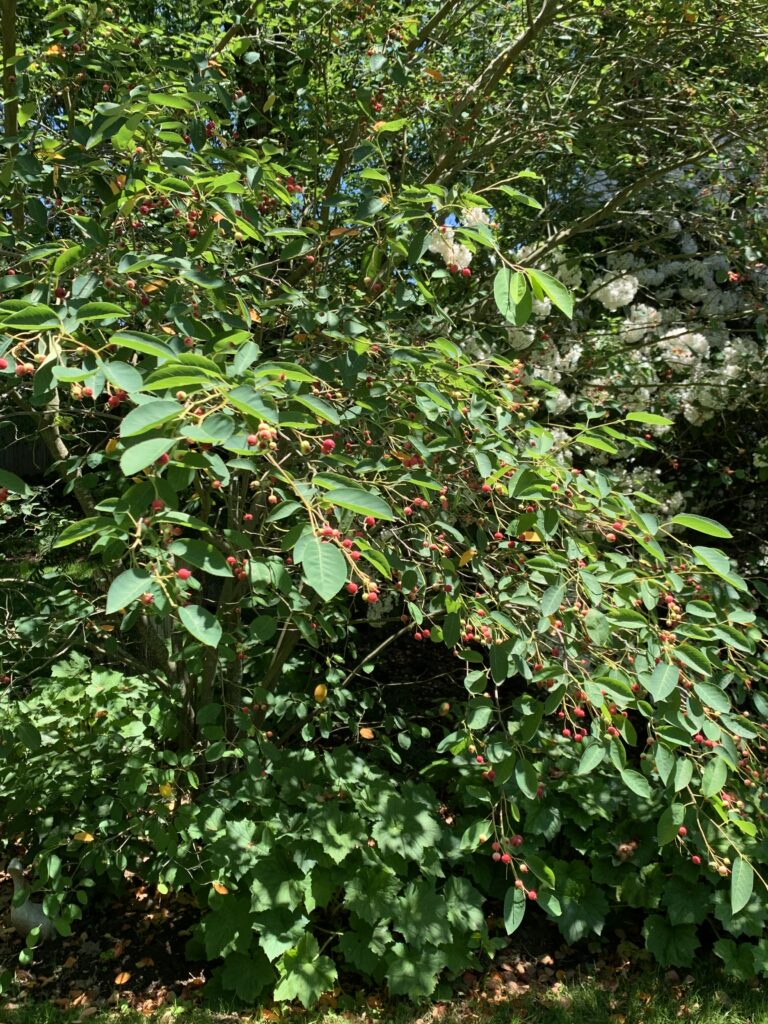
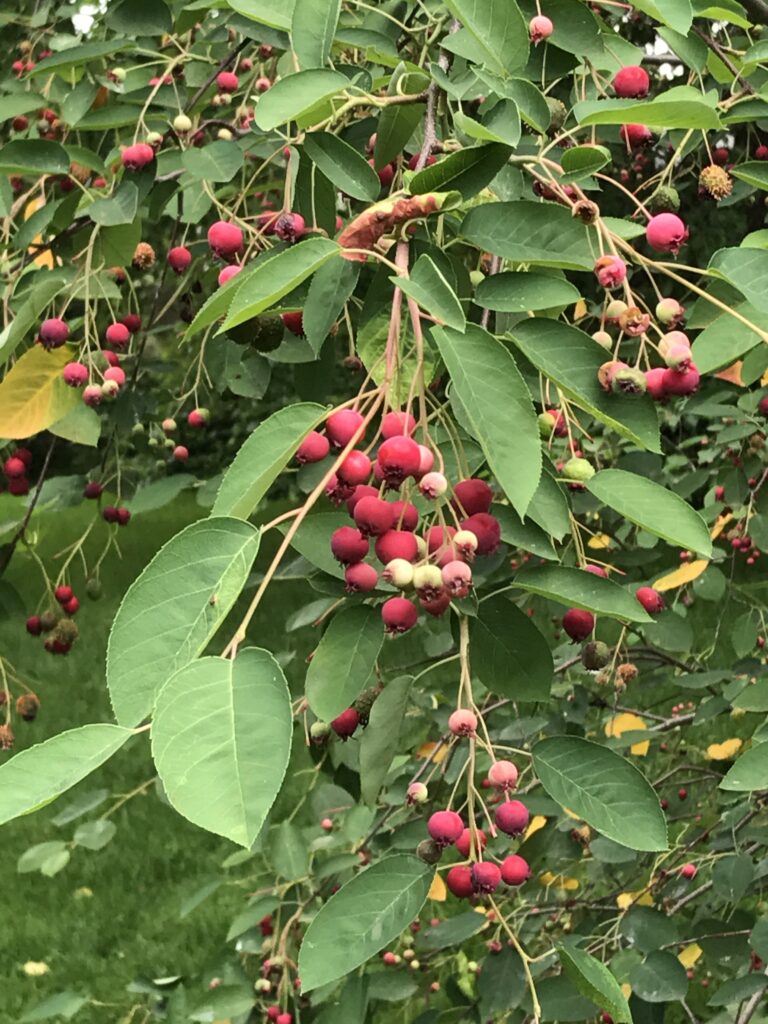
Botanically, Amelanchier is complicated. The genus includes over 20 species with native ranges from Canada and Alaska across the entire northern US, with some species even in Arizona and Florida. The best garden varieties in the northern US are Amelanchier arborea and Amelanchier laevis, both found in the taller tree form, and Amelanchier canadensis, which is more typically the multi-trunked shrub form. All three are hardy in zones 4 – 9 and prefer conditions typical of woodland edges, light shade and moist, fairly rich soil. These and other Amelanchier species freely interbreed both in the wild and in nursery conditions, so natural hybrids are common and very difficult to tell apart. If you’re shopping, you can choose a single trunk or multi-trunked specimen, and take whatever the label says with a grain of salt. But you really can’t go wrong.
After all, a gracious host like Amelanchier never turns a guest away from the garden….

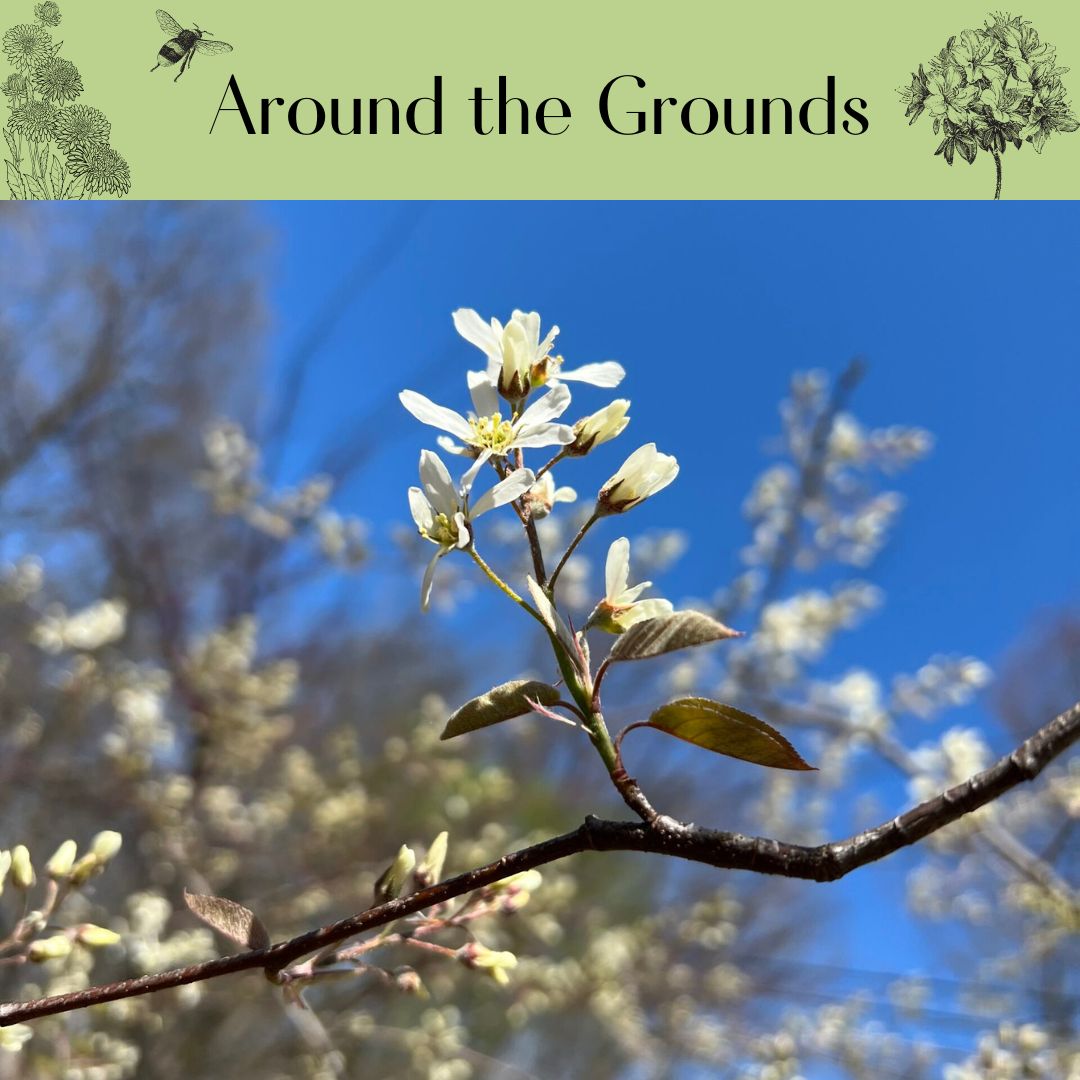
Love the info you provide, and your writing. I was thinking serviceberry is too tall for my space (overhead wires), but I learned the multi- stem may work.
The multi-truncked variety is more shrub-like and easily pruned for height. I also get more berries on that one than I do on the tree form — plus the berries are much easier to reach!
Great article! I’m in NJ and have room for one tree. I’m undecided between Eastern Wahoo or Downy Serviceberry. I’d like a tree that is most beneficial for insects and birds. Cathy, what are your thoughts? After reading this, I’m thinking Serviceberry offers more than Wahoo.
I would vote for the serviceberry, but I must confess that I have no experience with Eastern Wahoo. The wahoo is often called burning bush, and I have read that nurseries sometime confuse it with the invasive burning bush, which would be very unfortunate. Several writers say that the Wahoo can be a rangy awkward shape suitable for a wilder wooded area, so I think for a featured tree in your yard, the Amelanchier may be the better choice. You can find multi-trunked shrub forms or single-trunked tree shapes and both stay fairly small. I have one tree-form (Amelanchier arborea) that is maybe 30 feet tall, but rather narrow, and another shrub form (Amelanchier laevis) that is only 15 feet tall, but just about that wide as well. As for wildlife value, the shrub form is in more sun in my yard and so gets more berries— tons of berries! It is absolutely raided by birds and squirrels when the berries start to ripen. The flowers are a magnet for native bees and just so pretty in early spring. I really think you can’t go wrong with the Amelanchier. Good luck!
Great blog Cathy. I love learning from you. I always wondered if the berries were edible. Ruby seems to really enjoy them! So cute.
I come away from your blogs with great information and inspiration! Thank you.
Thanks, Sandy. Amelanchier is hardy in MN also!
Cathy, This is a wonderful post. I learned a lot and I especially liked the guest appearance of Ruby.
Thanks,
Jim
Thanks. Jim. Maybe you have room for an Amelanchier…
We just planted the multi-stemmed type last fall. can’t wait to see it this spring!
Guest appearance at the end by Ruby!
I loved that part!